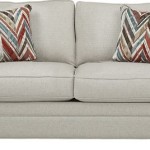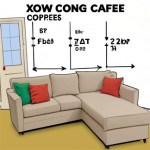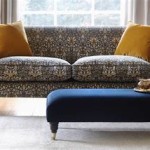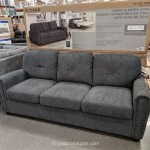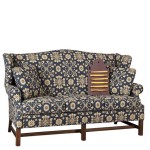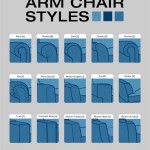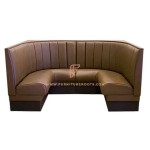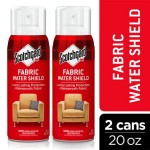Down-Filled Sofa vs. Foam: A Comparative Guide
Choosing the right sofa is a significant investment for any home. Two popular filling options dominate the market: down and foam. Each offers a distinct sitting experience and comes with its own set of advantages and disadvantages. Understanding these differences is crucial to making an informed decision.
Down-filled sofas utilize the soft, fluffy undercoating of geese or ducks. Known for their exceptional comfort and luxurious feel, they offer a sinking-in sensation that many find incredibly relaxing. Down filling conforms to the body, providing personalized support and a cloud-like experience.
One of the primary benefits of down is its breathability. The natural clusters allow for excellent air circulation, preventing heat retention and making them a suitable choice for warmer climates. This breathability also contributes to down's lightweight nature, making the sofas easier to move and rearrange.
However, down-filled sofas require regular fluffing to maintain their shape and even distribution of the filling. Over time, down can also lose its loft, requiring replacement or adding more filling. The cost of down filling is typically higher than foam, making these sofas a more significant investment.
Allergies are another factor to consider. While high-quality down undergoes rigorous cleaning processes, some individuals may still experience allergic reactions. Furthermore, down is not inherently stain-resistant and requires specialized cleaning methods.
Foam sofas, on the other hand, utilize polyurethane foam as their primary filling. This versatile material comes in various densities and firmness levels, offering a wider range of support options. High-density foam provides firm support, while low-density foam offers a softer, more cushioning feel.
Foam sofas are known for their durability and ability to retain their shape over time. Unlike down, foam resists compression and sagging, providing consistent support for extended periods. This resilience makes foam sofas a good choice for high-traffic areas and households with children or pets.
Maintenance is generally easier with foam sofas. Many feature removable and washable covers, simplifying cleaning and stain removal. Foam is also hypoallergenic, making it a suitable choice for individuals sensitive to dust mites or other allergens.
While foam offers advantages in durability and maintenance, it can sometimes lack the plush comfort associated with down. Lower-density foams might feel too soft and lack adequate support, while higher-density foams can feel overly firm. Breathability is also a concern with some foam types, potentially leading to heat retention in warmer environments.
Several variations of foam exist, each with unique properties. Memory foam, for instance, conforms to the body's contours, providing personalized support and pressure relief. However, it can also retain heat. High-resilience foam offers a balance of support and comfort while maintaining its shape over time.
The price point of foam sofas is typically lower than down-filled options, making them a more budget-friendly choice. The wide variety of foam types and densities also allows for greater customization and tailoring to individual preferences and needs.
Beyond the core filling material, the sofa's construction also plays a significant role in overall comfort and durability. Factors such as frame construction, spring system, and upholstery fabric contribute to the sofa's longevity and aesthetic appeal. Considering these elements in conjunction with the filling type ensures a well-rounded and informed decision.
Selecting between a down-filled and foam sofa ultimately depends on individual priorities and lifestyle. Those seeking ultimate comfort and a luxurious feel might prefer the cloud-like embrace of down. Individuals prioritizing durability, ease of maintenance, and hypoallergenic properties might find foam a more suitable choice.
Careful consideration of factors such as budget, climate, and personal preferences, along with an understanding of the inherent characteristics of each filling type, will lead to a satisfying and long-lasting sofa purchase.
Visiting furniture stores and physically testing different sofa types allows for a firsthand experience of the comfort and support offered by each filling material. This practical approach can significantly aid in making a final decision that aligns with individual needs and preferences.

Down Vs Foam Sofa Cushions Circle Furniture

Down Vs Foam Sofa Cushions Circle Furniture

Down Vs Foam Sofa Cushions Circle Furniture

Cushion Care The Sofa Chair Company

How To Choose The Right Sofa Cushion

Types Of Pillow Stuffing What S The Best Stated Home Blog

Looking To Buy A Sofa Or Chair Foam Versus Fibre Reviewed Millers

Sofa Advice From The People Who Design And Make Them Wirecutter

The Best Foam To Use For Sofa Cushions Good Better

How To Maintain Feather Filled Couches

